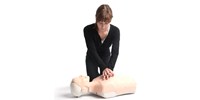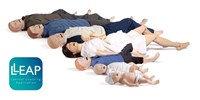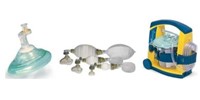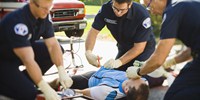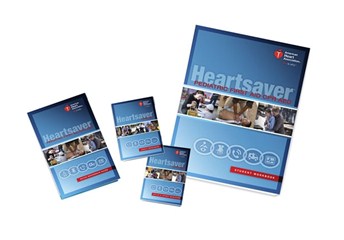The AHA's Heartsaver Pediatric First Aid CPR AED Course has been updated to reflect new science in the 2015 American Heart Association Guidelines Update for CPR and Emergency Cardiovascular Care and the 2015 American Heart Association and American Red Cross Update for First Aid.
This Instructor-led course is a classroom, video-based course that teaches students to respond to and manage illnesses and injuries in a child or infant in the first few minutes until professional help arrives. It covers topics including treating bleeding, allergic reactions, broken bones and sprains, seizures, and additional first aid emergencies. This course also includes child CPR and AED use, infant CPR, and an optional module in adult CPR and AED use.
Heartsaver Pediatric FA CPR AED teaches skills using AHA's research-proven practice-while-watching technique, which allows Instructors to observe students, provide feedback, and guide students' learning of skills. Upon successful completion of the course, including a first aid, CPR and AED skills test, students receive a Heartsaver Pediatric First Aid CPR AED course completion card, valid for two years.
After successfully completing the Heartsaver Pediatric First Aid CPR AED Course, students will be able to:
- List the priorities, roles, and responsibilities of a rescuer providing first aid to a child or infant
- Describe the 4 key steps in first aid for children and infants: prevent, protect, assess, and act
- Remove protective gloves (skill student will demonstrate)
- Find the problem (skill student will demonstrate)
- Describe the assessment and first aid actions for the following life-threatening conditions: difficulty breathing, choking, severe bleeding, and shock
- Control bleeding and bandaging (skills student will demonstrate)
- Use an epinephrine pen (skill student will demonstrate)
- Recognize elements of common injuries
- Recognize elements of common illnesses
- Describe how to find information on preventing illness and injury
- Recognize the legal questions that apply to pediatric first aid rescuers
- Describe how high-quality CPR improves survival
- Explain the concepts of the Chain of Survival
- Recognize when someone needs CPR
- Perform high-quality CPR for an adult*
- Describe how to perform CPR with help from others
- Give effective breaths by using mouth-to-mouth or a mask for all age groups
- Demonstrate how to use an AED on an adult*
- Perform high-quality CPR for a child
- Demonstrate how to use an AED on a child
- Perform high-quality CPR for an infant
- Describe when and how to help a choking adult or child
- Demonstrate how to help a choking infant
*Optional modules

